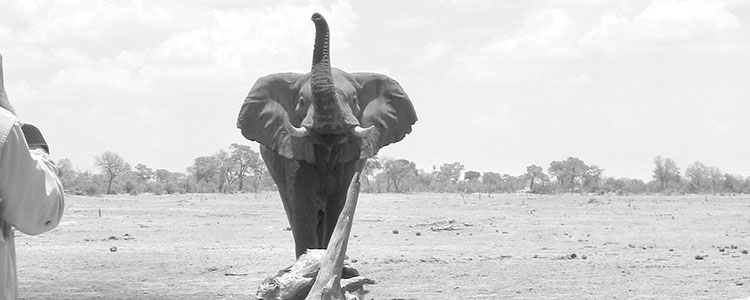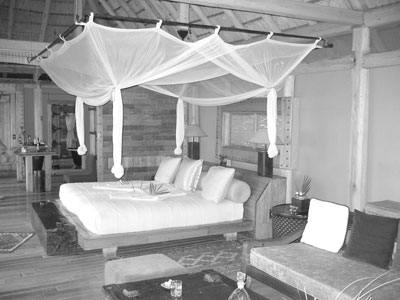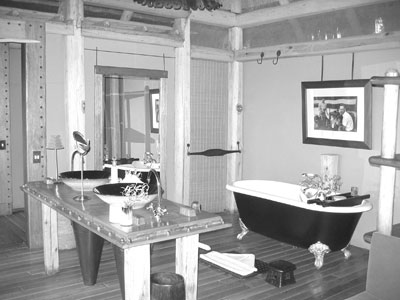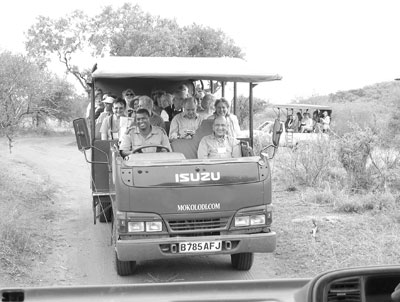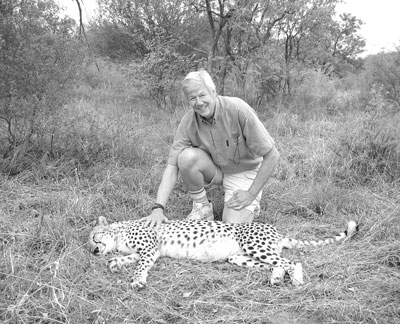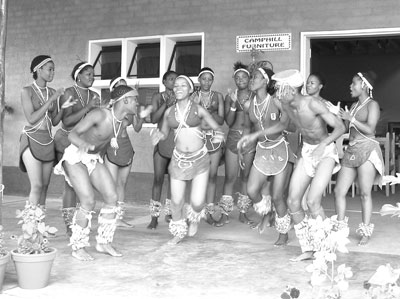Botswana — choosing the safari that’s right for you
by Robert Powell Sangster; Memphis, TN
Close your eyes for a moment. Say the word “safari.” What images fill your mind? “Out of Africa,” Hemingway’s “Snows of Kilimanjaro” or maybe the demonic lions in “The Ghost and the Darkness”? The reality is very different.
Safari insights
In fact, safari is a Swahili word that simply means “journey,” usually in the context of a traveling caravan or expedition on foot.
Today, wild animals know they have little to fear from the occasional passing Land Rover bearing soft-shell humans. When we respect their space and families, even the few animals that hunt other animals will do everything they can to avoid us.
Safaris focus on watching exotic wildlife in their natural habitat, but they can be about so much more. If we toss out the “animals I’ve spotted” checklist and immerse ourselves in this environment very different from our Ordinary World, being on safari becomes a feast for the senses. Perhaps for the first time we understand the meaning of ecological systems, of interdependence of species, of the complex rhythms of seasons and water.
Because safaris are so fascinating, I’ll describe several types, what they’re really like and how much they cost. (I should also mention that the only “weapons” I carry are my cameras and my senses.)
Botswana
Safaris have a reputation for being expensive. Some are. Others are very affordable. Let’s start at the top with my November ’03 visit to Wilderness Safaris’ Kwetsani Camp in the heart of the Okavango Delta, a seasonal wetland in the northern part of Botswana. It’s so remote that the only practical way to get there is by light bush plane from the town of Maun.
Within 10 minutes of loading our gear into a Land Rover open on the sides and top, guide Gregg Hughes was pointing to elephants, giraffes, hippos. . . and our photographic safari in Southern Africa was under way.
This is a tent?
The Wilderness Safaris brochure referred to “tents” and “camps,” but, far from roughing it, we lived in luxury. Kwetsani Camp accommodates only 10 guests yet maintains a staff of 20. Whether meals were Indian, Chinese or Continental, they were bountiful, expertly prepared and always accompanied with tropical fruit, imported cheeses and undeniable desserts.
To avoid crossing paths with elephants and various passing critters, I reached my secluded bungalow via a raised boardwalk. The bungalow on stilts rose like an elegant tree house into the lower branches of palm and fig trees.
Facilities included electricity, running water, an en suite shower and a flush toilet. What made it special was the huge bed with crisp linens (strewn daily with fresh flower petals), heavy hand-carved furnishings, locally fired ceramic tiles, a spacious deck and, that ultimate pleasure, an outdoor shower with a view of wild game parading across the open savanna.
The safari consisted of day and night game drives, guided nature walks and mokoro (dugout canoe) trips into the labyrinth of delta waterways. I shared the landscape with lions, Cape buffalos, zebras, red lechwe, hyenas, leopards, a zillion impalas and much more. The guide’s vast knowledge of ecology, botany, geology and wildlife could earn him a university post.
Hiding from elephants
For those who prefer more rustic accommodations, I’ll mention Savuti Camp, located on the dry plains of the Kalahari (in the Linyati Reserve). It’s on a low bluff overlooking a riverbed that dried up after a tiny tectonic tilt in 1980 sent the water on a different course. (It was flowing copiously when Dr. David Livingstone stood on this site in 1851.)
Savuti Camp has a water hole only a few dozen yards from the front deck of the lodge that’s said to attract as many as 3,000 elephants in a single day. Not surprisingly, the camp’s outstanding feature is the “hide” (for humans) at the edge of the water hole. The hide is a rough circle about 30 feet in diameter made of loosely stacked trunks and limbs from leadwood trees. As a barrier, it’s a very low-feeling four feet high.
Seeing elephants approach the water hole, the guide and I ran across the riverbed and climbed inside the hide. A couple of bull elephants stood no more than 25 feet away, drinking and tossing cascades of water on their backs and stomachs, all the while keeping an eye on us. After a few minutes, the larger of the two became annoyed at our presence. He suddenly raised his trunk high, flared his ears and thundered straight at the hide.
I kept filming, confident we wouldn’t be there if the cautious guide felt there was serious risk. Just a couple dozen paces from the hide the bull skidded to a stop but kept his “I’m very large and fearsome” features in place. When satisfied he’d let us know what he could have done if he really wanted to, he grunted and turned away. It was a wake-up call for my adrenaline angel.
Is a luxury safari for you?
This kind of safari costs more than some prospective visitors would like to pay, about $650 per person per night, all inclusive. Costs are high in Botswana’s Okavango Delta. To preserve the unique environment, the government sharply limits the number of safari accommodations. A spacious lodge, full staff and all equipment and vehicles may serve only 10 guests.
If the price suits, it’s hard to beat a luxury safari. However, if luxury is too pricey, that doesn’t mean going on safari is only a pleasant dream. There are many affordable alternatives.
Other choices
To help you consider which best suits your tastes and your wallet, I’ll mention three inexpensive safaris I greatly enjoyed in the past.
When I reached Kenya several years ago carrying a backpack, I assumed, based on brochures I’d seen in the States, that a safari would destroy my budget. Within 24 hours, representatives of a dozen Nairobi-based companies had approached me — in the airport and while dining at sidewalk cafés — offering very affordable safaris. I could choose destinations (Masai Mara, Amboseli, Tsavo, etc.) and trip length and still bargain on the price. Hakuna matata. No problem. (Another place worth checking is the famous bulletin board at the Thorn Tree Café.)
The vehicles were pop-top Toyota vans, and visibility was fine. The tents were real, erected each night by staff. Meals weren’t fancy but were always tasty.
Paths sometimes became crowded when a number of van drivers, alerted by radio, converged on one spot, but the upended wildebeest and the bloody-mouthed lions were quite real. Sure, there were more people around and a lodge is not a remote luxury camp, but we were out there with the wildlife.
Even today, I’d guess the cost would be one-fifth to one-tenth that of a luxury safari.
In Arusha, Tanzania, five of us hired a van and driver from Mr. YaSin of Tourcare (phone 3127/9), who consistently provided more than he promised. We took off for Lake Manyara, Ngorongoro Crater, Louis Leakey’s digs at Olduvai Gorge and the Serengeti to watch the great migration. Each night, the driver found a very affordable lodge for us. We weren’t in the remote bush with a world-class guide, but we had complete freedom to set our course and pace — and the wildlife was very real.
From those two safaris I learned a lesson that has served me well. Costs are considerably lower if you arrive without a confirmed itinerary and book locally. Some modern travelers can’t tolerate that. For others, it’s certainly worth some temporary uncertainty to make an African safari affordable.
Oddballs’
On my first trip to Botswana’s Okavango Delta, in 1991, I went on a mokoro safari based at Oddballs’ Palm Court Lodge, a place I discovered on the travelers’ grapevine. For camping, cooking gear, a mokoro and guide, two of us paid a total of $70 per night. We poled the waterways, went ashore wherever we chose and walked freely among the animals, cooked over an open fire and told travelers’ tales under the Southern Cross. It doesn’t get any better than that.
Since then, the name changed to Oddballs’ Palm Island Luxury Lodge (okavango@info.bw). Living in a domed tent on an elevated wooden deck runs about $230 per person per night (single supplement, $50 per night). The price includes meals, park fees, guided walks, mokoro excursions and 10% VAT. A 2-night minimum stay is required. (Check for specials; discounted walk-in rates are sometimes available.)
There are many other affordable choices. Rent a 4-wheel-drive truck with two tents mounted on the roof and take off on your own. Or live in a village in the Kalahari Desert and learn about the culture of the San. And ask Google to search for “Kenya (or Tanzania, Zambia, Botswana or South Africa) — cheap safaris.” You’ll find plenty to choose from.
Deciding when to go
On safari, weather really matters. Botswana can be very hot or very cold, so research exactly what temperatures to expect. Forget averages; get highs and lows. In the dry season, it’s easier to spot animals because they must gather at the few available water holes. Find out when the great game migrations occur in the Serengeti and Masai Mara. Determine when mosquitoes are an issue.
Choosing your camp
Safari companies typically operate several camps and they may differ greatly. Differences in cost and amenities are obvious, but there are other issues to consider:
(a) Are activities focused on water, water and land or land only? I prefer a site located on or near water so mokoro trips are possible.
(b) If a camp accommodates 10 people, you needn’t see one another except at meals. More than 20 might feel crowded.
(c) Consider visiting more than one camp to ensure variety in wild game, landscape and living conditions.
Tips for your Botswana safari
Lodging— Wilderness Safaris — offers many camps in several countries, all operated at very high standards. It is hard to imagine better service, accommodations and equipment.
Kwetsani Camp — The market rate depends on the season, and negotiation, but it can range from $500 to $650 per person per night (and Kwetsani is not the highest-priced camp in the Wilderness group). That’s all-inclusive: “tent,” all meals, high-quality alcohol, bottled water, all services such as guide, game drives and laundry — everything. It consists of only five tents, serving a maximum of 10 guests.
Savuti Camp — describes itself as a “legendary predators’ enclave,” including lions, leopards and cheetahs. There’s a swimming pool and seven “walk-in tents” with every comfort. It’s more rustic, and the rate is considerably less than that of Kwetsani.
Economics — The currency in Botswana is the pula (a word that means, in this desert land, rain). At an exchange rate of 4.6 pula to $1, the U.S. dollar was worth about one-half as much as it was a couple of years before.
Language — Most Botswanans can speak English but speak Tetswana among themselves. This is a very easy country for travelers to navigate.
A safari is not the real Africa
Being on safari can stoke the spirit and thrill the senses, but it won’t teach you much about diverse African cultures. To learn that, you must travel slowly, walk the streets, visit markets, watch and listen.
I urge you to add at least a week to the end of your safari for a walkabout. For example, South Africa, Zululand, Swaziland and the Drakensberg Mountains, even Cape Town, are easy trips from Botswana. In Namibia, consider a drive from Windhoek up the Skeleton Coast or to Etosha National Park.
So why go on safari?
On safari, we enter a world very different from our daily life. We stand beneath a bright blue sky full of towering cumulus clouds that rise 360 degrees around us from a pan-flat savanna. No longer blinded by man-made light, we gaze silently at a night sky etched with shooting stars more numerous than taxis on Broadway. Free from the hum generated by urban life, we hear the rustle of a single bull elephant browsing through acacia branches a hundred yards away.
There’s time to breathe deeply and marvel.

